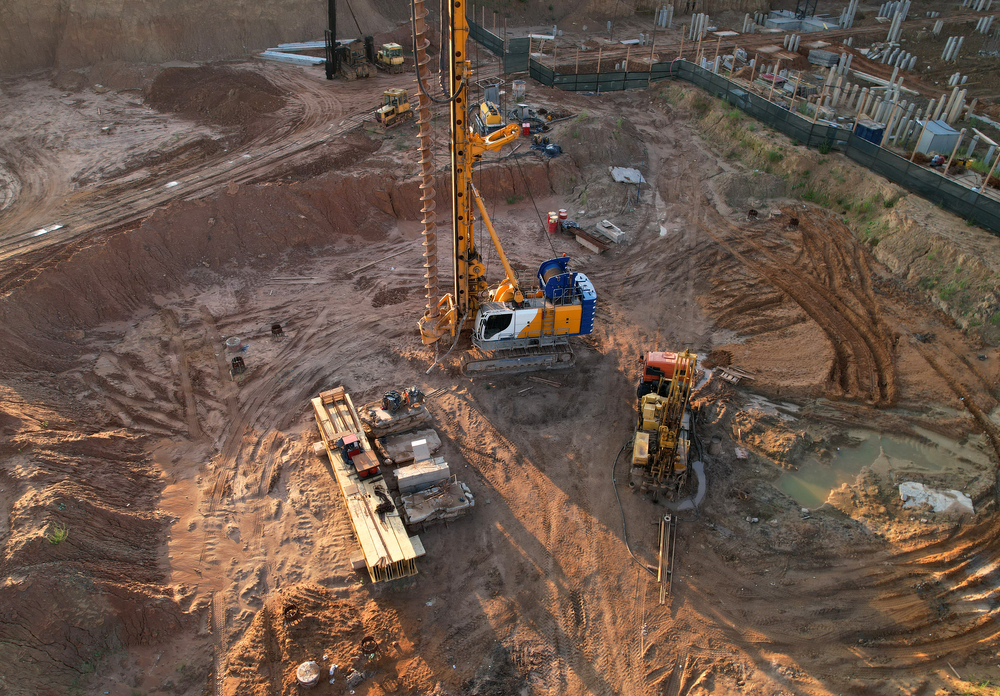Little Known Facts About Geotheta.
Little Known Facts About Geotheta.
Blog Article
Some Ideas on Geotheta You Need To Know
Table of ContentsThe Main Principles Of Geotheta 3 Simple Techniques For GeothetaSee This Report about GeothetaSome Known Questions About Geotheta.What Does Geotheta Mean?

They perform website examinations, collect samples, carry out laboratory examinations, and examine information to assess the viability of the ground for building and construction projects - Consulting Engineer. Based on their searchings for, geotechnical designers offer recommendations for structure design, incline security, preserving frameworks, and reduction of geotechnical dangers. They work together with various other experts, such as architects, structural designers, and construction groups, to make sure that geotechnical considerations are incorporated right into the overall project design and implementation
By assessing the actions and homes of dirt and rock, they can recognize prospective geotechnical dangers such as landslides, dirt settlement, or slope instability. Their expertise aids avoid failures or crashes that could endanger lives and residential or commercial property. Here are some comprehensive obligations and responsibilities of a geotechnical designer: Site Examination: Geotechnical engineers conduct site examinations to gather information on subsurface conditions.
They translate the information to recognize the properties and actions of the dirt and rock, including their strength, permeability, compaction attributes, and groundwater conditions. Geotechnical Evaluation and Layout: Geotechnical engineers evaluate the information collected during site investigations to examine the stability and viability of the website for building and construction tasks. They execute geotechnical computations and modeling to evaluate elements such as birthing ability, negotiation, incline stability, lateral planet pressures, and groundwater flow.
5 Simple Techniques For Geotheta
Structure Layout: Geotechnical engineers play a critical role in designing foundations that can securely sustain the designated framework. They examine the dirt problems and tons demands to identify the appropriate foundation type, such as superficial structures (e.g., footings), deep structures (e.g (https://medium.com/@ianhammond2191/about)., heaps), or specialized methods like dirt enhancement. They take into consideration aspects such as settlement restrictions, bearing capacity, and soil-structure interaction to create optimal foundation styles
They examine building plans, display site tasks, and conduct area examinations to confirm that the layout referrals are complied with. If unanticipated geotechnical problems emerge, they examine the circumstance and offer referrals for removal or changes to the design. Risk Analysis and Mitigation: Geotechnical designers analyze geotechnical risks and risks associated with the project site, such as landslides, liquefaction, or dirt disintegration.

Cooperation and Communication: Geotechnical designers function closely with various other professionals included in a task, such as engineers, architectural engineers, and construction teams. Effective communication and collaboration are necessary to integrate geotechnical factors to consider right into the general job design and construction procedure. Geotechnical designers supply technical expertise, answer queries, and ensure that geotechnical requirements are fulfilled.
How Geotheta can Save You Time, Stress, and Money.
Here are some kinds of geotechnical engineers: Structure Designer: Foundation engineers concentrate on designing and evaluating foundations for frameworks. They assess the soil problems, load demands, and site attributes to figure out the most suitable structure kind and style, such my company as superficial structures, deep structures, or specialized techniques like heap foundations.
They evaluate the elements affecting incline security, such as soil residential properties, groundwater conditions, and incline geometry, and create methods to stop incline failures and reduce risks. Quake Designer: Quake designers specialize in assessing and developing structures to hold up against seismic forces. They examine the seismic danger of a site, review soil liquefaction potential, and establish seismic layout requirements to ensure the safety and strength of structures during earthquakes.
They carry out area screening, collect examples, and evaluate the gathered data to characterize the dirt residential or commercial properties, geologic formations, and groundwater conditions at a site. Geotechnical Instrumentation Designer: Geotechnical instrumentation designers concentrate on monitoring and measuring the behavior of dirt, rock, and structures. They install and keep instrumentation systems that keep an eye on elements such as dirt negotiation, groundwater degrees, incline movements, and architectural variations to analyze efficiency and supply very early cautions of possible issues.
Get This Report about Geotheta
They perform tests such as triaxial tests, loan consolidation tests, straight shear examinations, and leaks in the structure examinations to gather data for geotechnical evaluation and layout. Geosynthetics Designer: Geosynthetics engineers concentrate on the style and application of geosynthetic materials, such as geotextiles, geogrids, and geomembranes. They make use of these materials to enhance dirt stability, reinforce slopes, give drain remedies, and control disintegration.
They tend to be investigative individuals, which suggests they're intellectual, introspective, and investigative. They are interested, systematic, rational, analytical, and logical. A few of them are also social, implying they're kind, charitable, participating, client, caring, helpful, understanding, tactful, and friendly. Does this seem like you? Take our free job examination to discover if geotechnical engineer is just one of your leading career suits.
In the office environment, geotechnical designers utilize specialized software devices to carry out calculations, create layouts, and assess data. They prepare records, evaluation job specs, connect with customers and employee, and coordinate project activities. The workplace setting supplies a helpful atmosphere for research study, evaluation, and cooperation with various other specialists associated with the project.
The 30-Second Trick For Geotheta
They regularly see project sites to carry out website examinations, analyze geotechnical problems, and collect information for evaluation. These sees entail traveling to various areas, occasionally in remote or challenging terrains. Geotechnical designers might carry out dirt tasting, conduct tests, and screen construction activities to make sure that the geotechnical facets of the project are being implemented properly.
Geotechnical engineers additionally function in specialized geotechnical labs. Geotechnical laboratory designers work extensively in these settings, managing testing equipment, running tools, and videotaping information.
Report this page